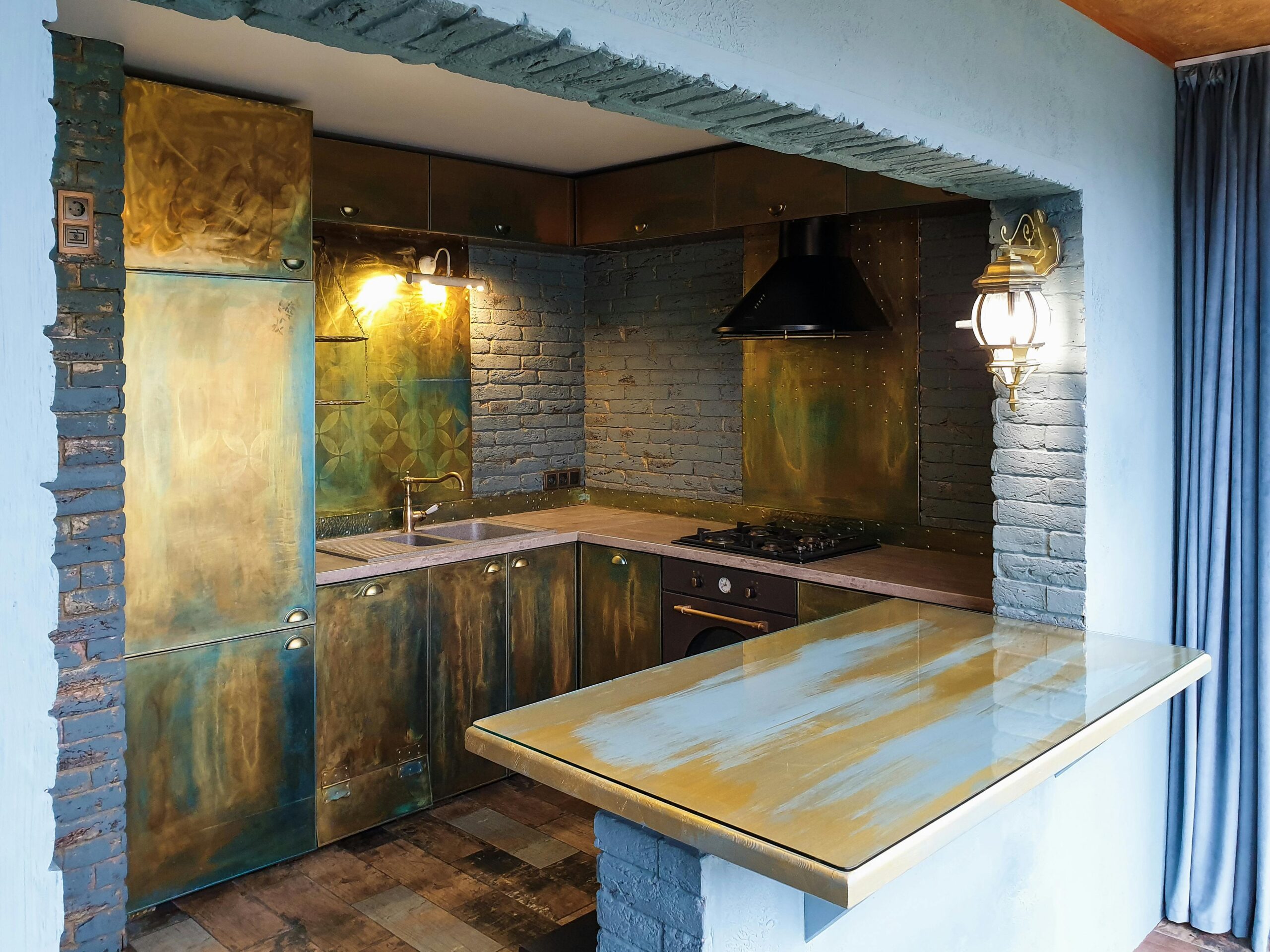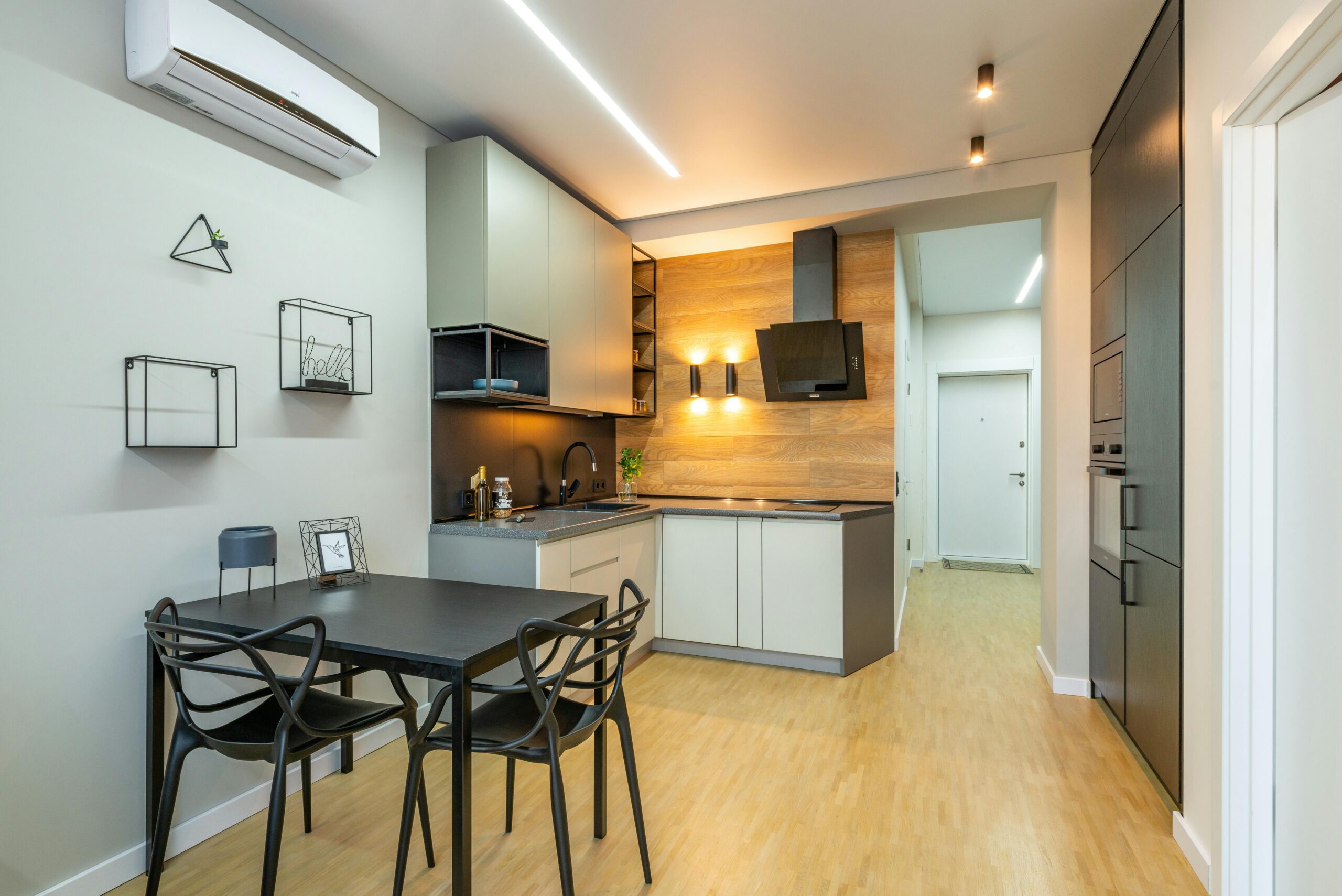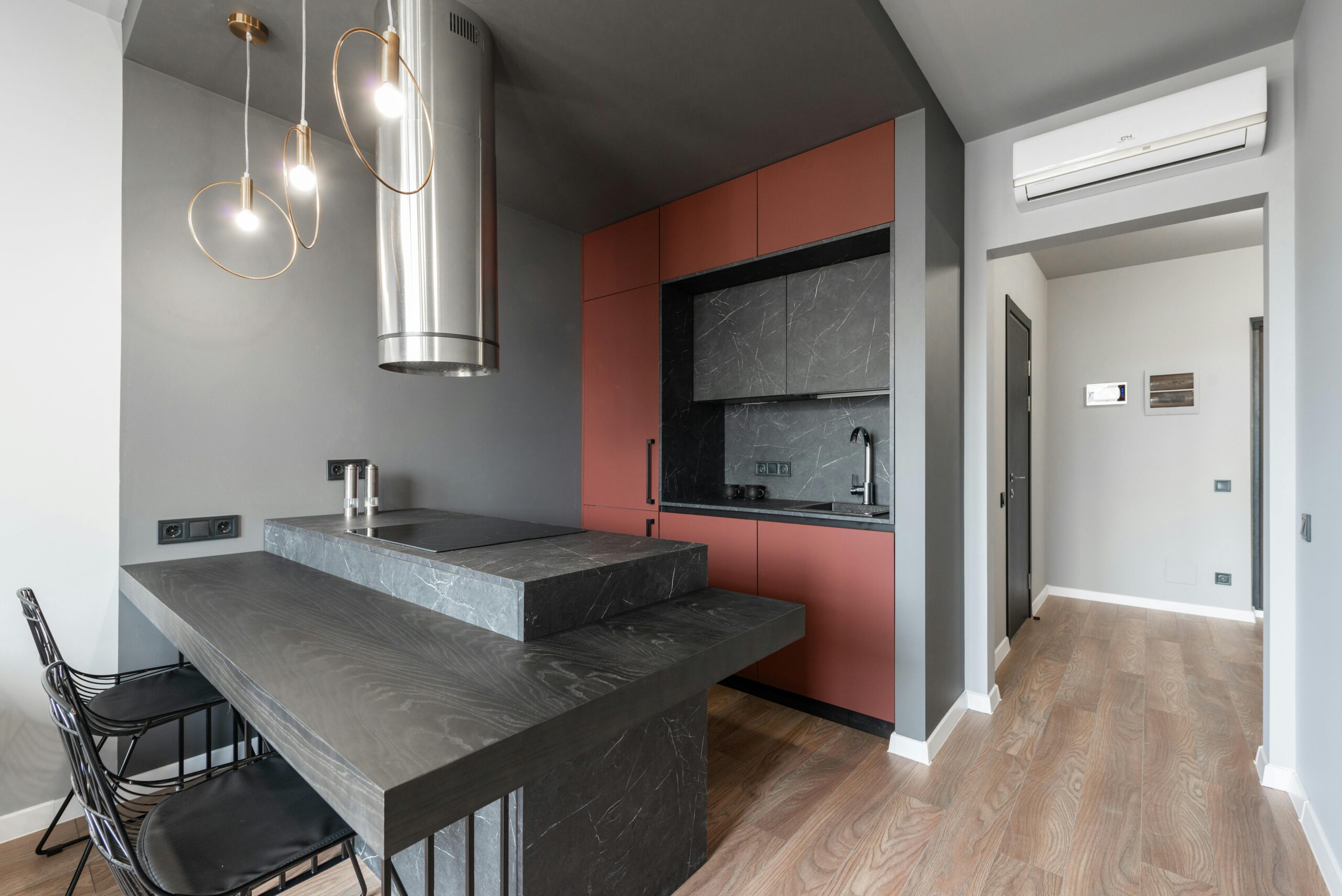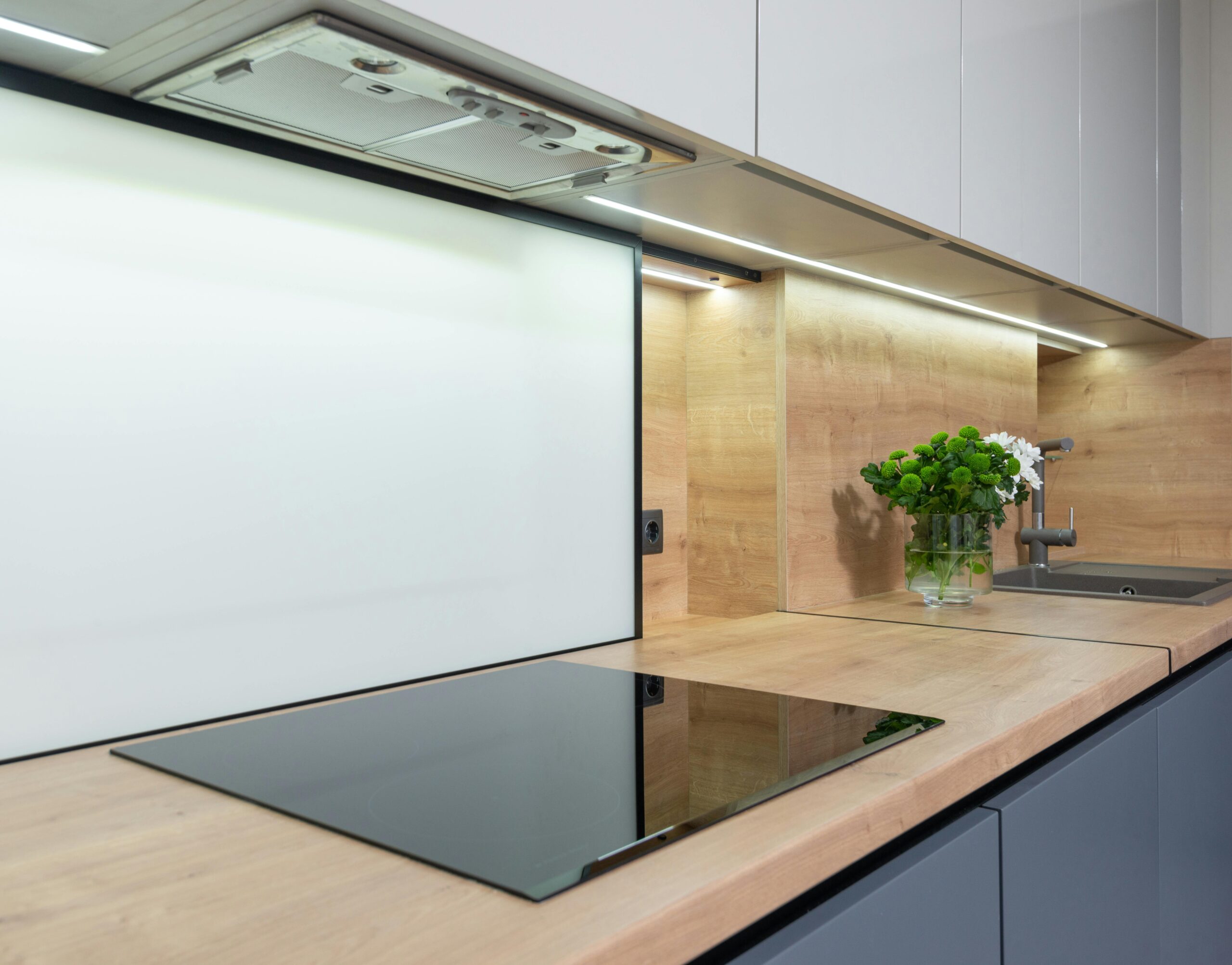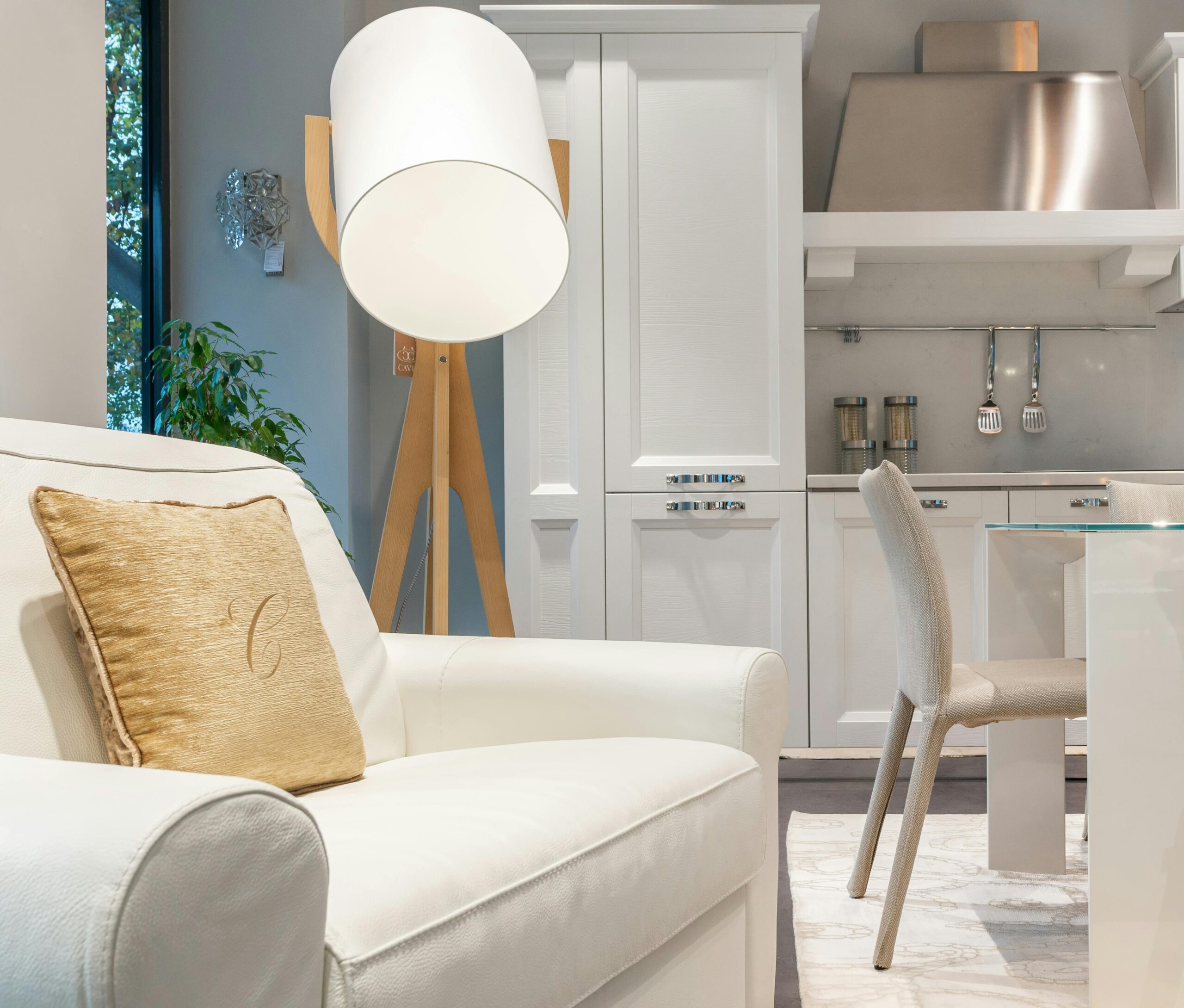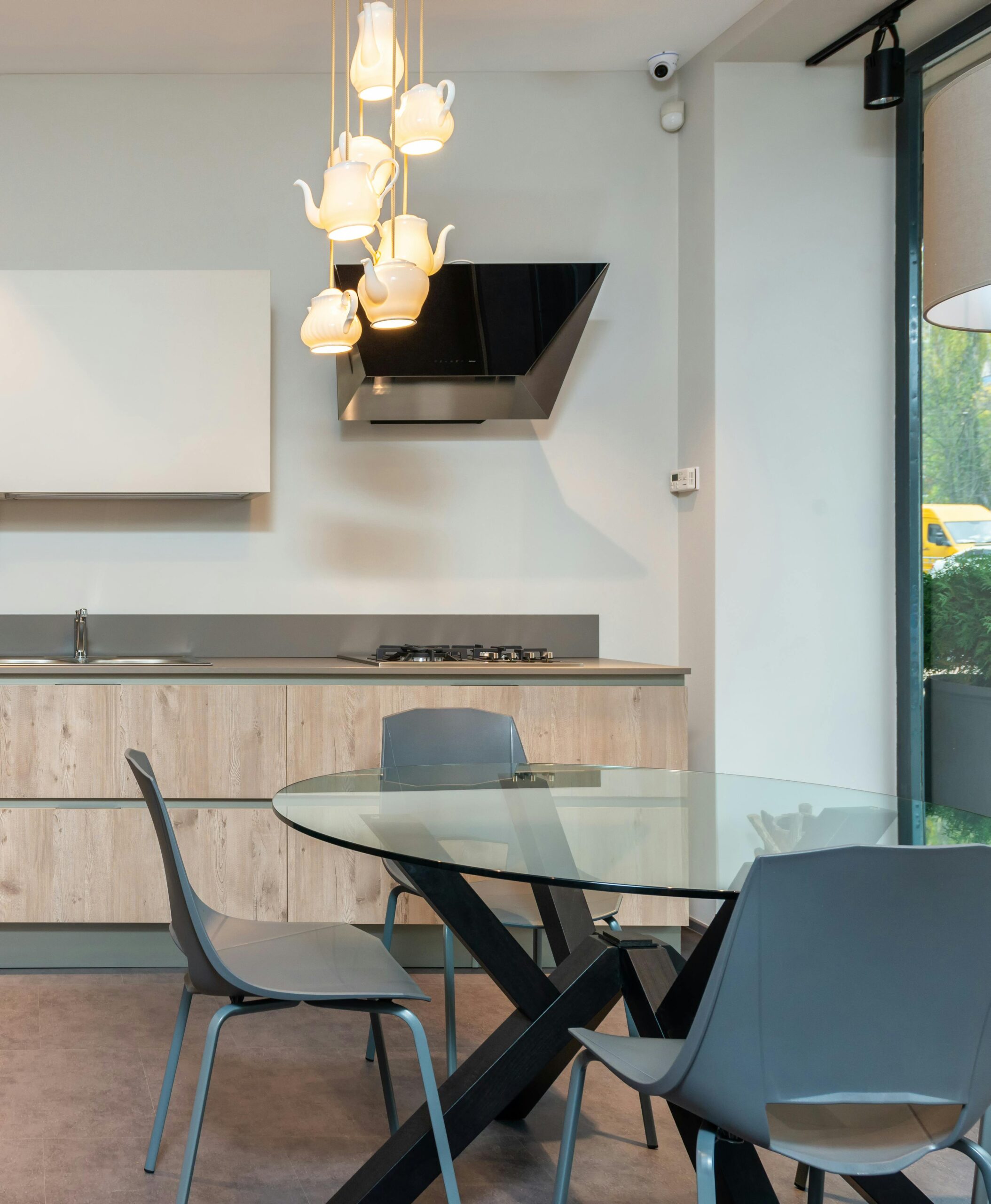The kitchen is considered the heart of the home; it deserves careful consideration regarding style and functionality. When cooking, we can create different smells or smoke depending on the dish. These can linger in the air, discolor your cabinets, and harm your health. This is where the range hood comes in handy.
A kitchen range hood, also known as an exhaust hood or ventilation hood, serves essential functions such as maintaining air quality, removing odors, and preventing the accumulation of grease and moisture in the kitchen.
Benefits of Owning a Kitchen Range Hood
Kitchen Safety
Cooking can sometimes lead to accidents, especially when cooking at high temperatures and open flames. Range hoods act as a safety device by removing grease from the air, reducing the risk of fires and explosions in the kitchen. It also helps maintain a clean cooking environment, minimizing grease buildup on surfaces that can pose a fire hazard.
In addition, the range hood also plays a vital role in preventing fires. Cooking accidents like grease fires can happen suddenly and escalate quickly. Range hoods with integrated fire suppression systems can help contain and extinguish a fire before it spreads, potentially saving lives and preventing significant property damage.
Helps Cleanliness
Another vital function of the hood is to remove grease particles released during cooking.
Grease can accumulate on surfaces, cabinets, and appliances, forming an oily film and causing stains that are difficult to clean. Range hoods absorb grease particles and prevent them from settling on surfaces, helping to keep the kitchen clean and easier to clean.
Smoke/Odor Removal
The main function of a kitchen range hood is to capture and remove smoke, cooking odors, and airborne grease produced during cooking. It helps maintain a clean and odor-free kitchen environment.
Air Filtration
One of the main functions of a kitchen hood is to filter the air in the kitchen. Smoke releases steam and grease particles when we cook, causing poor indoor air quality. Kitchen hoods help capture and filter these particles, preventing them from spreading throughout the home. This is especially important for people with respiratory problems or allergies.
Lighting
Many range hoods include built-in lights to illuminate the cooking surface. This improves a clear view of food and makes it easier to check food while cooking. It provides enough light for cooking work, reducing the risk of accidents. Additionally, lighting can improve the overall aesthetics of the kitchen.
Energy Efficient
Modern range hoods are designed with energy savings in mind. They often have adjustable fan speeds and energy-saving modes, allowing you to tailor their operation to your kitchen’s needs.
By effectively removing only the amount of air needed and adjusting ventilation as needed, you can save on energy costs in the long run.
Adds Property Value
A range hood is an improvement and investment for your home. They enhance security and access to dark corners of backlit burners. They remove harmful substances from the air and minimize the buildup of messy dishes. In other words, kitchen hoods are in high demand. Installing a suitable range hood in the kitchen is a standard option sought after by many buyers.
Types of Kitchen Range Hoods
Wall Mounted Range Hoods
Wall-mounted range hoods resemble fireplace chimneys but are often made of metal in today’s kitchens. The classic look of the fireplace wide at the base, at least as wide as the stove’s width, and often taper to a narrower column at the top above the stove is suitable for many kitchens, especially open spaces or kitchens with large professional ranges. A large oven and stovetop create a natural focal point for any sized room, while a wall-mounted range hood provides visual balance.
Tip: Ideal for kitchens without cabinets over the stove.
Island Range Hoods
Without the aid of walls to help conduct heat and moisture. These hoods are ducted into the ceiling to exhaust contaminated air, smoke, and vapors directly from the home.
The shape of an island range hood is similar to a wall-mounted range hood – wide at the base and narrow at the top -but the island range hood will be designed to have a 360-degree view to catch the eye as a kitchen style.
Tip: Suited for kitchens with a cooking surface on an island.
Under-cabinet Range Hoods
This type of range hood is mounted under cabinets and features a range hood the size of a stovetop to help absorb smoke, humidity, and increased heat. These allow secure storage space above the stove and hob.
All ducts are hidden behind the cabinet door, with cabinet recesses between the ducts and the adjacent cabinet. Lower cabinets are ideal for kitchens and small apartments where venting to the outside is not an available option.
Tip: Suitable for kitchens with cabinets over the cooking area.
Hood Inserts
Insert hoods are loved by interior designers and contractors because of the personalized layout they allow in the kitchen. These sturdy hood inserts fit a range hood that is custom-designed to match the style of the rest of the room; from wood to tile and metal, they aim to let you build your range hood in any size or shape.
Tip: Allows for a personalized appearance with a custom-designed cover.
Downdraft Range Hoods
Instead of putting vents in the ceiling or wall above, pulling air upward to filter and exhaust, downdraft-facing range hoods exhaust air through smaller ducts installed below the cabinets. Layers of fans and filters combine with modern technology to direct air away from the cooking space. At the press of a button, the unique design keeps the fan out of sight until needed again.
Tip: Suitable for kitchen islands where an overhead hood is not practical.
Size and Power
Hood size and power are important considerations. The size of the hood should be proportionally the same as the size of your kitchen stove. A range hood that is too small will not effectively remove smoke and odors, while a too-large hood can be unnecessarily noisy and use more energy. A range hood’s capacity is measured in cubic feet per minute (CFM) and should be enough to remove odors and smoke effectively.
It only takes a little arithmetic and measuring to determine the CFM range required for your kitchen. These are merely broad recommendations to reduce the vast array of options. When starting a new project, it’s crucial to confirm that everything installed complies with local codes by consulting your architect or contractor or reviewing the manufacturer’s specs.
Ventilation Type
There are two main ventilation systems for range hoods: ducted and ductless. Ducted range hoods use ducts inside your home to move contaminated air outside your home. This type of hood provides the best ventilation.
However, if you don’t have ducts, you can try a ductless model, often called a “recirculating range hood.” Ductless range hoods draw and then neutralize the air through filters before it is recirculated. Some range hood models can be converted into ductless range hoods using a carbon filter.
Lighting
Range hoods can create shadows between overhead kitchen lighting sources and the work surface above the range hood. Essential for most households is the ability to illuminate the interior under the hood at the touch of a button. Lighting options can include super bright LEDs, fluorescent lights, incandescent bulbs, or halogen bulbs, and they are safe to use when cooking or as night lights in dark kitchens.
Filter Type
- Aluminum mesh filters use layers of grids of fine aluminum and fibers to help trap the contaminated air. Easy to clean but may need more frequent maintenance.
- Charcoal filters are often used in recirculating range hoods used in ductless hoods to remove odors. Require periodic replacement.
- Residue cups help collect and trap oil and grease from above and around the cooking area. They should be hand-washed with soap and hot water.
Design Elements
The range hood’s design should complement your kitchen’s style and decor. A good range hood must have a sleek, modern design that blends perfectly with the rest of the kitchen. The hood should be made from high-quality materials such as stainless steel or tempered glass, which is durable and easy to clean. A good range hood must have a shape that matches the stove it serves.
Aesthetic Integration
A good kitchen range hood must also be aesthetically pleasing. Its color, texture, and finish determine the aesthetics of a range hood. It should match or complement the color of the kitchen cabinets and appliances. The stainless-steel range hood is popular because it is versatile and suits many styles.
Cleaning Maintenance
Consider the ease of maintenance and cleaning requirements of the range hood. Look for range hoods with removable filters that are easy to clean or, when damaged, easy to repair. Some range hoods also have features such as automatic sensor cleaning or self-cleaning functions, making maintenance easier.
Budget
Determine how much you are willing to spend on a kitchen hood range. Prices can vary widely based on brand, features, and design. Advanced features such as multiple fan speeds, adjustable lighting, and smart technology can affect costs. Decide which features are essential for you and prioritize accordingly.
Cooking Preferences
It’s crucial to consider the quantity and cooking you do. A wider range hood is necessary for a large cooking activity. You should get a heavy-duty one if you utilize high heat, enjoy stir-frying, and cook frequently. You can choose a range hood for light cooking if you only cook a little weekly food.
To efficiently eliminate cooking odors and oil, you’ll need a more robust range hood with a larger CFM (cubic feet per minute) if you cook a lot and use heavy-duty cooking techniques like grilling and frying.
Noise Level
Let’s say your house has an open-concept layout, and the noise from your range hood when you cook could disturb those watching TV. If so, consider looking at a kitchen range hood with the power option of putting its motor on the roof instead of the range hood unit within the home. You will significantly lessen the noise in your kitchen if you select a range hood with this style.
Warranty and Service
When purchasing a kitchen range, it’s crucial to consider warranty and service since they can affect both the long-term cost of ownership and your level of happiness. Verify how long the manufacturer is offering a warranty. Extended warranties frequently signify the manufacturer’s confidence in the robustness and functionality of the device. Check to see what the warranty covers.
This could apply to labor, parts, or both. It’s essential to read the terms and conditions of warranties as some may only cover specific parts. Find out who the manufacturer’s service providers are. If repairs are required, having a large and conveniently accessible service network helps you quickly locate skilled specialists.
Additional Features to Look For
Fan Speed
Even while many manufacturers have up to six speeds, many cooks will find that three is plenty; make sure there are always at least three settings—high, medium, and low—available to finish the task. Choose a range hood with several fan settings depending on how much ventilation you need for cooking.
Electronic Controls
When you have push-button and digital electronic panels to modify the airflow as needed precisely, then that’s a bonus anybody is looking for!
Exhaust Timer/ Auto Shut-off
Set the range hood to filter the air after an intense cooking session at dinner. It automatically shuts off after a predetermined time, so there’s no need to wait around to turn off the exhaust.
Heat Sensors
The range hood enables air ventilation swiftly by raising the fan setting and increasing the temperature surrounding the cooking area.
Wi-Fi and Smart Device Compatibility
You can adjust the settings from any room by using your preferred smartphone to manage certain brands and models of range hoods.
Great Kitchen Range Performances
The capacity of a range hood to draw in and remove steam and smoke from the kitchen determines how well it works. A good range hood should be able to collect a lot of steam and smoke produced during cooking, which is known as high capture efficiency. Ensure the range hood is appropriately sized to cover the entire cooking area. The hood should extend beyond the width of the cooking surface to capture fumes effectively.
The range hood’s design dictates the capture efficiency. A superb range hood should have a canopy vent hood that extends at least three inches beyond the stove’s edges on each side, covering the entire cooktop. Additionally, the canopy must be positioned at the ideal height to collect steam and smoke.
In addition, the range hood needs to contain charcoal filters to absorb smoke and smells produced during cooking and a grease filter to collect oil and other particles. The filter must be simple to remove and clean to keep the range hood operating at its best.
Conclusion
Range hoods in the kitchen offer numerous benefits crucial to the overall kitchen and cooking experience. Homeowners should turn to valuable guides in selecting and designing the ideal range hood for their kitchen based on their cooking habits, personal preferences, and budget.

